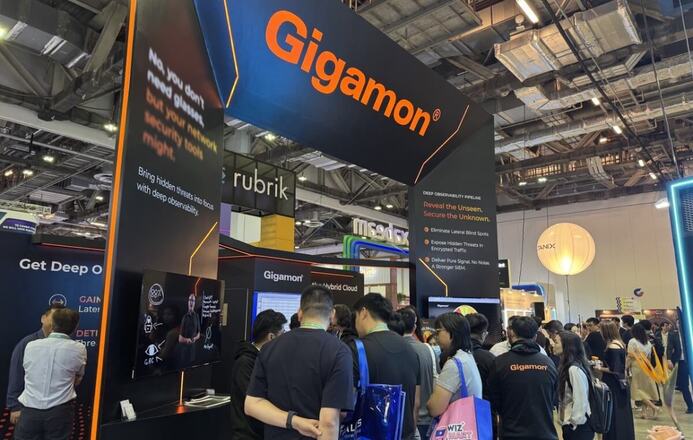
As quantum computing moves from theory to reality, cybersecurity teams worldwide are racing to prepare for the day when existing encryption systems can no longer protect sensitive data. In a major step toward that future, Gigamon – a leader in deep observability and hybrid cloud security – has announced the release of GigaVUE 6.12, adding full support for post-quantum cryptography (PQC).
The update enhances the Gigamon Deep Observability Pipeline, giving organizations new tools to detect, analyze, and respond to emerging cryptographic risks hidden inside encrypted traffic. With PQC support, Gigamon enables enterprises to future-proof their data protection strategy while meeting growing compliance and regulatory expectations around quantum-safe encryption.
A Defense Against the Quantum Threat
Quantum computers, capable of performing calculations exponentially faster than traditional systems, pose a looming threat to the public key cryptography that secures nearly all digital communication today. Experts warn that quantum capabilities could break widely used algorithms like RSA and ECC as early as 2030, rendering vast stores of encrypted data vulnerable.
Gigamon’s newly enhanced Deep Observability Pipeline provides visibility into both classic and post-quantum ciphers, giving Security and IT teams the intelligence they need to identify and phase out weak encryption before quantum decryption becomes feasible.
The company’s own Hybrid Cloud Security Survey, which polled over 1,000 IT and security leaders, found that 73% of organizations are actively planning PQC implementations within their networks. That growing awareness reflects an urgent shift in enterprise priorities – from reactive security to proactive quantum resilience.
Deep Observability for a Quantum-Safe Future
Gigamon’s approach to PQC readiness centers on deep observability – correlating network-derived telemetry (packets, flows, metadata) with logs and analytics from cloud and security platforms. This unified visibility enables teams to map where cryptography is used, monitor how data moves across hybrid infrastructures, and pinpoint which systems remain vulnerable to attack.
With GigaVUE 6.12, organizations can now:
- Build a complete cryptographic inventory, exposing outdated cipher suites and non-compliant encryption still active in the network
- Validate PQC implementations to ensure secure operation of new quantum-safe algorithms
- Support TLS 1.3 natively, currently the only protocol ready for PQC compatibility
Gigamon’s Precryption technology offers a key advantage here: it provides plaintext visibility into encrypted traffic – whether in virtual machines, containers, or public clouds – without the need for decryption or “break and inspect.” This allows teams to monitor traffic efficiently while maintaining strict privacy and compliance boundaries.
Combating the ‘Harvest Now, Decrypt Later’ Threat
One of the most pressing motivations for PQC adoption is the growing prevalence of ‘harvest now, decrypt later’ attacks. In this scenario, adversaries intercept and store encrypted data today, anticipating that future quantum computers will be able to decrypt it once the technology matures.
Analysts at Gartner and other research firms have identified this as a global security imperative, urging organizations to transition to quantum-safe cryptography before 2030 to avoid long-term exposure.
Gigamon’s Application Metadata Intelligence (AMI) technology, now enhanced with PQC support, helps counter this threat by offering deep visibility into encrypted flows. By correlating network metadata – such as TLS versions, cipher suites, and endpoint identifiers – Gigamon allows security teams to detect weak encryption practices and flag potential exposure before sensitive data is exfiltrated.
Integration and Automation for Hybrid Environments
A key strength of the GigaVUE 6.12 release is its interoperability. The platform exports flow records and enriched metadata directly into popular Security Information and Event Management (SIEM) systems like Splunk, QRadar, and Elastic. This integration enables automated alerts and dashboards that visualize insecure connections, ensuring continuous compliance with internal and external standards.
Gigamon’s platform also streamlines the migration to PQC by identifying outdated TLS/SSL implementations and flagging assets using deprecated algorithms. This level of observability gives enterprises a clear path to phase in quantum-resistant cryptography while maintaining operational uptime.
For organizations managing complex hybrid infrastructures – spanning private data centers, multi-cloud environments, and edge deployments – Gigamon’s combination of encryption visibility and network intelligence represents a critical step toward sustainable, quantum-ready cybersecurity.
The Road Ahead
As the countdown to practical quantum computing accelerates, the cybersecurity landscape is entering a new era of urgency. Transitioning to PQC is not just a technical upgrade; it’s a strategic necessity for protecting data sovereignty, customer privacy, and national security.
Gigamon’s PQC-enabled Deep Observability Pipeline illustrates how security infrastructure must evolve in tandem with cryptographic science—bridging visibility gaps, ensuring compliance, and laying the groundwork for secure hybrid cloud operations in a quantum-capable world.
The company’s proactive stance reflects a growing industry recognition: quantum preparedness is not optional. It’s the next frontier of data protection.
Executive Insights FAQ: Post-Quantum Cryptography (PQC) Essentials
What is post-quantum cryptography (PQC)?
PQC refers to cryptographic algorithms designed to withstand attacks from quantum computers, which could break existing public-key encryption methods like RSA and ECC.
Why do businesses need to prepare for PQC now?
Experts predict that quantum decryption could become viable within the next decade. Organizations must migrate early to protect long-term data confidentiality.
What is the ‘harvest now, decrypt later’ threat?
Attackers are stealing encrypted data today, expecting to decrypt it later using quantum technology. PQC mitigates this risk by making stored data quantum-resistant.
How does deep observability support PQC readiness?
By providing visibility into encrypted traffic, weak cipher suites, and TLS implementations, deep observability helps identify and remediate cryptographic vulnerabilities across hybrid networks.
Which protocols support PQC today?
TLS 1.3 is currently the only widely deployed protocol compatible with PQC algorithms, and it forms the foundation for secure quantum-era communication.
What steps should executives take to begin PQC migration?
Start by auditing encryption usage, updating TLS versions, adopting deep observability tools, and working with vendors aligned to NIST’s quantum-safe standards roadmap.


![How A Chinese Villager Shook Silicon Valley [DeepSeek Founder]](https://wiredgorilla.com/wp-content/plugins/wp-fastest-cache-premium/pro/images/blank.gif)